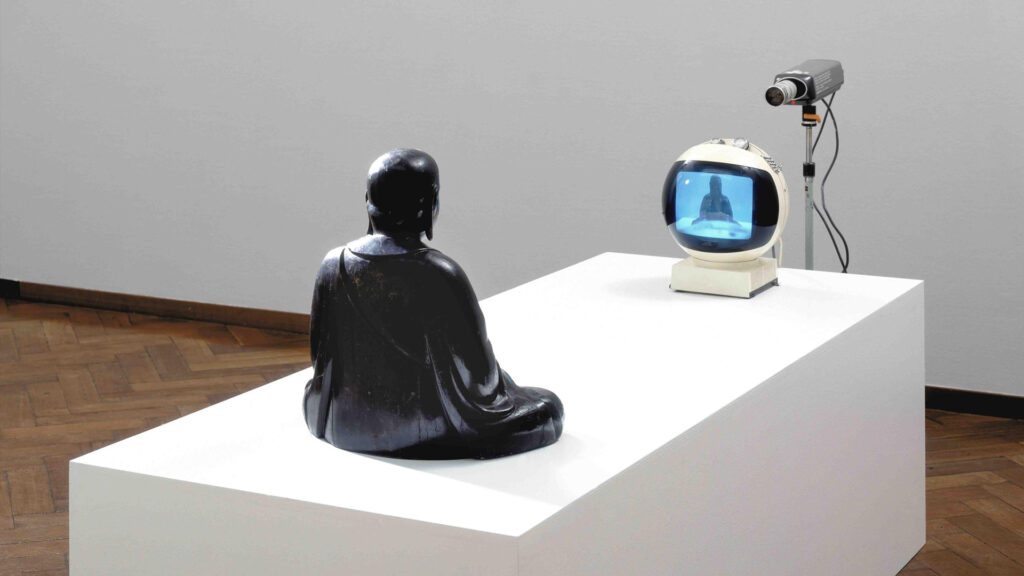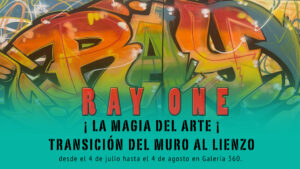Since I began to delve into contemporary art, I encountered authors I didn’t like and others that truly captured my attention. One of these authors is Nam June Paik, who has become one of my references. Without a doubt, he is a pioneer of video art, known for his ability to fuse technology and artistic expression. His work “Buda TV,” created in 1974, is a prominent example of this fusion, inviting profound reflection on the interaction between art, spirituality, and technology.
I remember the first time I saw “Buda TV” live. I was with a friend who accompanied me to each of the museums I visited during those vacation days in the city. Unaware of Paik, we visited an exhibition at Asia Society in New York, and that moment left me deeply impacted. Since then, I have learned that this work has been exhibited in multiple museums around the world, including renowned spaces in New York like MoMA, the Whitney, and the Guggenheim. Each location offers a new dimension, and seeing the work in person is a transformative experience.
The piece combines the figure of the Buddha, a symbol of peace and spirituality in Buddhism, with the medium of video, which is often associated with consumer culture and immediacy. This contrast raises questions about how technology affects our perception of the spiritual. Paik suggests that in a world dominated by media, spirituality can be found and reinterpreted through them.
By placing the image of the Buddha on a television screen, Paik also explores the role of media in shaping contemporary consciousness. Instead of being an object of worship, the Buddha becomes a media icon, suggesting a critique of the superficiality of mass culture.
Paik was innovative in his use of video as an artistic medium. In “Buda TV,” he manipulates images and sound to create a visual experience that transcends mere information. The work demonstrates how video can be used to meditate on deeper issues, transforming an ephemeral medium into a space for reflection.
Although “Buda TV” is not interactive in the contemporary digital sense, it invites viewers to actively participate in their experience. The contemplation of the Buddha’s image in a commonplace context, like a television screen, provokes critical and personal reflection on its meaning.
Born in South Korea, Paik integrates elements of both Eastern and Western cultures into his work. “Buda TV” reflects his interest in the dialogue between these cultures, especially at a time when globalization was beginning to take hold. The piece shows how ancient traditions can coexist and be reinterpreted in a modern world.
Additionally, “Buda TV” is a precursor to contemporary video art. By using video not only as a means of representation but as a concept in itself, Paik opens the door for future artists to explore video as a form of social critique and philosophical reflection.
“Buda TV” by Nam June Paik transcends its era, offering a critique of contemporary society and its relationship with technology and spirituality. Through his innovative use of video, Paik not only reconfigures the image of the Buddha but also invites us to a deep reflection on the role of media in our lives. His work remains relevant today, reminding us that the quest for spirituality can find new paths in a media-driven world.









